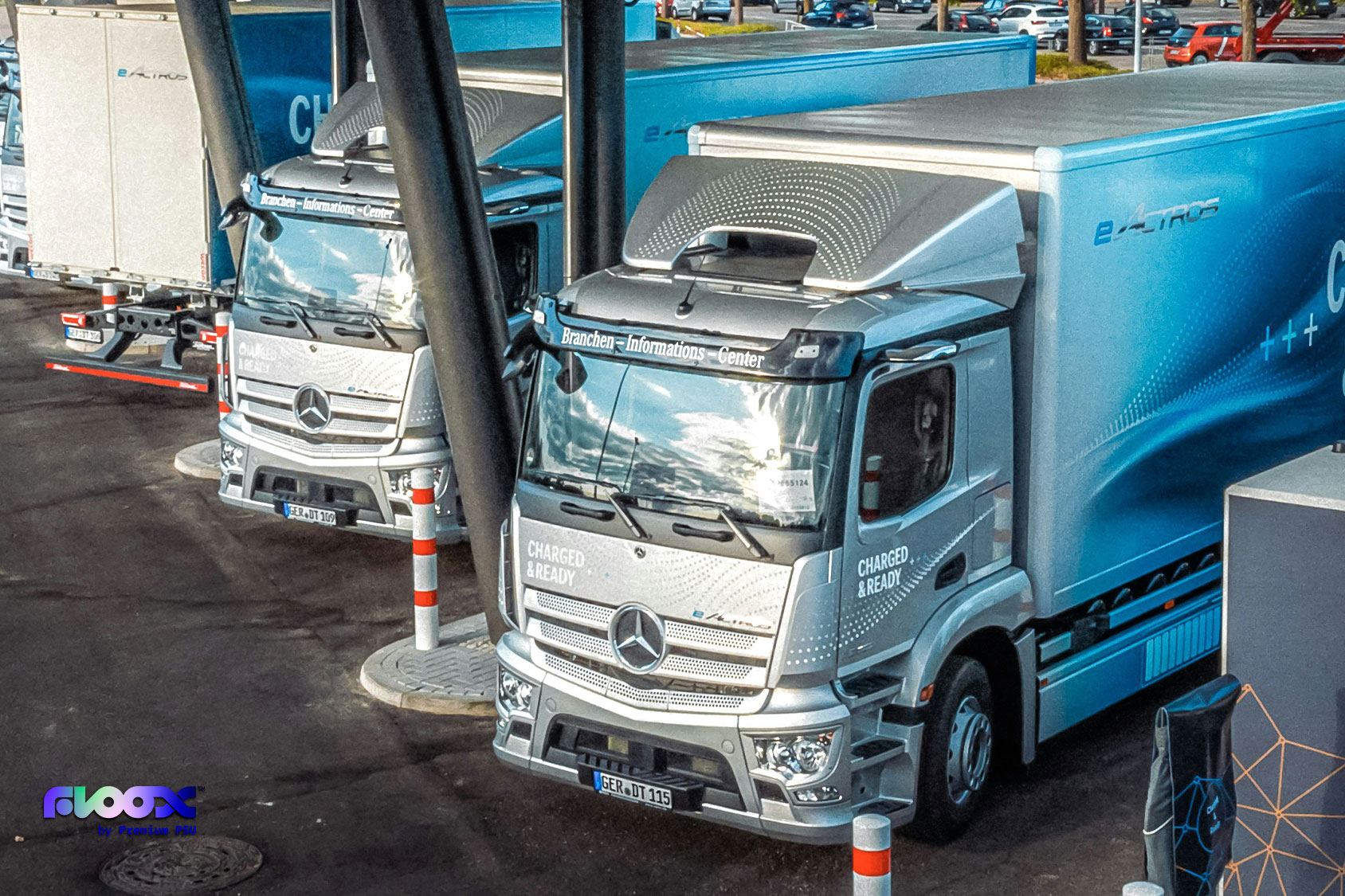
Considering that heavy transport is responsible for a significant percentage of greenhouse gas emissions, the biggest advantage of electric trucks is their zero emissions. They also reduce noise pollution, which is particularly relevant for trucks operating in cities. By reducing noise levels, they can operate during the night, helping to ease traffic congestion and reduce noise pollution. However, there are challenges to overcome to make electric trucks a viable alternative.
The first is the issue of recharging time, as these vehicles travel long distances and need several hours to recharge their batteries, which can lead to delays in deliveries. In addition, to increase range, larger and heavier batteries are needed, which increases the weight of the vehicle. This leads to another challenge in promoting the popularization of electric trucks, which is the need to improve the availability of charging points on the roads.
DC fast charging stations play a crucial role in the electrification of long-haul trucks. However, its implementation poses several challenges and opportunities:
Challenges:
- Infrastructure Investment: Establishing fast charging stations requires significant upfront investment in high-power chargers, grid connections and supporting infrastructure, which can be a barrier to widespread adoption.
- Peak Demand Management: Managing peak power demand at fast charging stations, especially during periods of high traffic, requires careful planning to ensure efficient and reliable charging services.
- Pricing Strategies: Determining optimal pricing models for fast charging services, considering factors such as charger utilization, energy costs and customer demand, presents a complex challenge for charging point operators.
Opportunities and Solutions:
- High Power Chargers: Investing in high power chargers with scalable capacity can improve the efficiency and performance of fast charging stations, meeting the energy demands of long-haul trucks.
- Time Variable Pricing: Implementing variable pricing models based on demand patterns can optimize charger utilization, incentivize off-peak charging, and maximize the profitability of fast charging services.
- Collaboration and Standardization: Collaborative efforts among stakeholders to standardize fast charging infrastructure, interoperability and pricing frameworks can streamline operations and encourage industry-wide adoption.
- Grid Integration: Integrating fast charging stations with smart grid technologies and renewable energy sources can improve grid stability, reduce operating costs and promote sustainable charging practices.
Emission-free heavy-duty vehicle transport: electric trucks
Leading companies such as Volvo, DAF, Iveco or MAN already have models available for purchase that are ready to travel long distances with heavy loads without emitting any amount of CO2.
Volvo enjoys great prestige in the heavy transport sector. It currently has three models of electric trucks of different sizes. These trucks have a range of up to 320 km and use batteries with a capacity of 540 kWh. Another well-known brand in the sector is DAF, with a battery capacity of up to 525 kWh, its models stand out for their impressive range, as they promise to reach up to 500 km on a single charge.
German truck and bus brand MAN is currently focusing on the development of multiple electric trucks. The most advanced is the MAN eTruck, which has a charging capacity of 1 MW, allowing it to recover 80% of its range (800 km) in just one hour.
Charging stations for electric trucks
The Pirvep Project (Recharging Infrastructure Plan for Heavy Electric Vehicles), promoted by Aedive, aims to electrify heavy transport in compliance with the requirements of the AFIR recently approved by the European Parliament. Aedive has presented a proposal of scope to 2025, 2027 and 2030, with a map of locations and powers aimed at establishing the regulatory and market objectives that will allow the development of this activity with zero emission heavy vehicles *3
Challenges in Meeting Regulatory Requirements
- In the basic network, by December 31, 2025, a recharging group with a power of 1,400 kW will be required with at least one of 350 kW in 15% of the overall length (every 120 km in both directions).
- By December 31, 2027, a 2,800 kW recharging group will be required with at least two 350 kW recharging groups on 50% of the overall length (every 120 km in both directions).
- By December 31, 2030, a 3,600 kW recharging group is planned with at least two 350 kW recharging groups (every 60 km in both directions) *3.
Technological Developments
- Manufacturers of charging points and electric vehicles have pointed out that there are current developments to the needs of heavy electric transport, with real solutions close to the standardization of the MCS standard. However, the regulatory aspects need to be accelerated and the necessary incentives clarified to make both the acquisition of heavy electric vehicles and charging infrastructures viable *3.
This project reflects the efforts to electrify heavy transport in compliance with the requirements of the AFIR recently approved by the European Parliament, with the objective of establishing regulatory and market objectives that will allow the development of this activity with zero-emission heavy vehicles *3.
In conclusion, the implementation of DC fast charging stations for long-haul trucks is a complex task. However, by addressing the challenges and taking advantage of the opportunities presented, we can overcome these obstacles and pave the way for a more efficient and sustainable transportation system. Through collaboration, standardized infrastructure and smart grid integration, we can ensure the successful adoption of fast charging stations, ultimately benefiting the electrification of long-haul trucking.
Get to know the 100% fast-charging electric chargers made in Barcelona
Our chargers are reliable, safe and designed to suit the needs of any business. Don’t miss the opportunity to contribute to a more sustainable future and discover our fast charging electric chargers.
Lyra 60
The Lyra 60, with a charging capacity of 60kW and two CCS2 connectors, is the most compact charger on the market. Ideal for businesses that require fast rotating charging, such as restaurants, gyms, dealerships, transport fleets and PoR operators.
SuperFloox
The SuperFloox model, on the other hand, has a charging capacity of 60 kW and can charge up to three cars simultaneously, with two high-capacity DC connectors and an optional third AC connector up to 22 kW. It is a suitable option for medium-sized service stations, transport fleets or concessionaires and PoR operators.
UltraFloox
The UltraFloox is the most advanced model and allows the simultaneous charging of two vehicles, adapting to power ratings of 90, 120, 150 or 180 kW direct current. This model is an excellent choice for service stations, dealers, transport fleets and PoR operators requiring ultra-fast charging, as vehicles can reach 80% of their full battery capacity in just 15 minutes.
Make sure you always have the power you need with FLOOX chargers!










